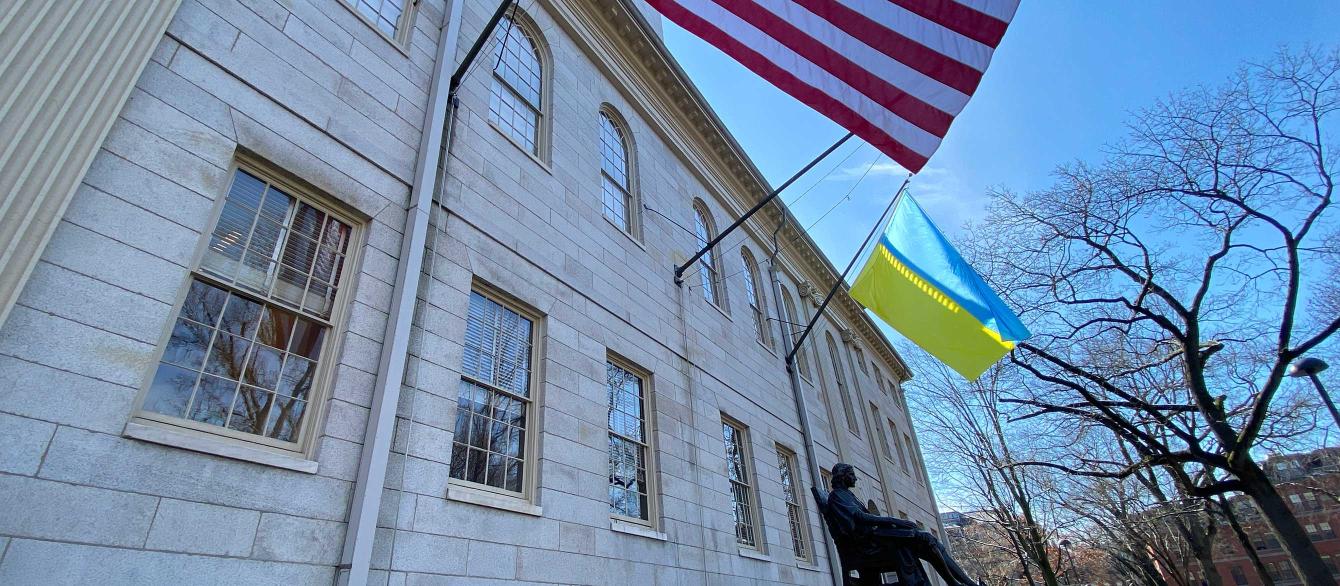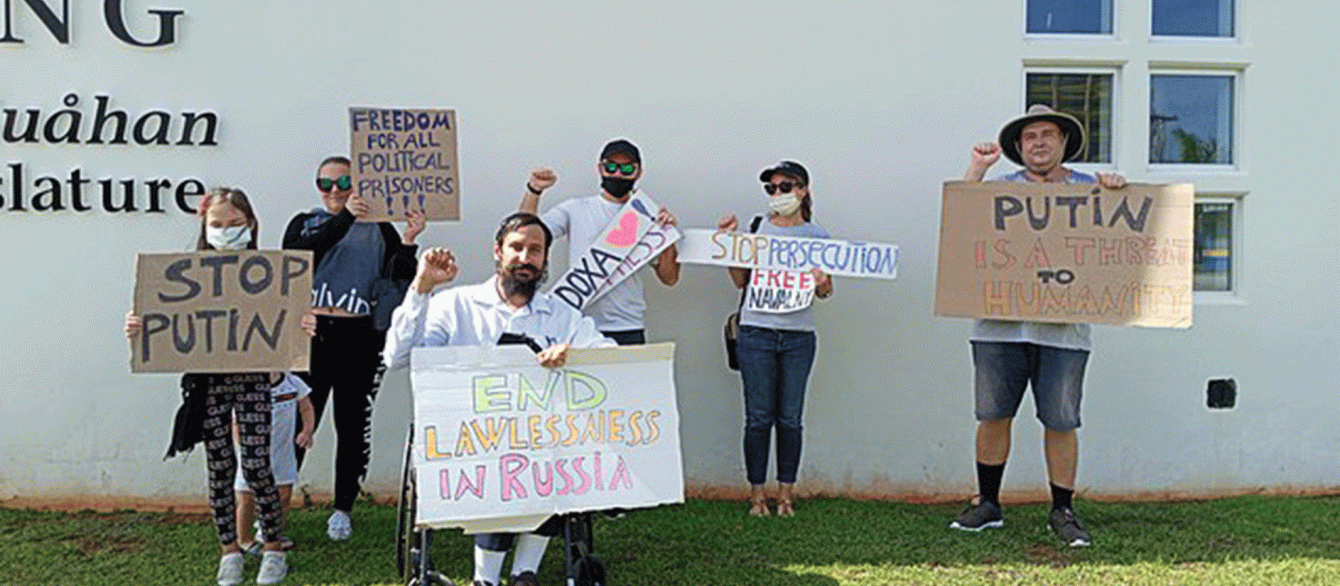On April 14, 2021, the Moscow offices of the student-run journal DOXA were raided by the police. The cause was a three-minute video that briefly appeared on the DOXA site in January of the same year before being taken down on the orders of Roskomnadzor four days later. The clip expressed support for students threatened with expulsion for participating in anti-government protests that erupted all over Russia shortly after the arrest of Alexei Navalny in 2021. The four DOXA editors who happened to be in the office that day—Natalia (Natasha) Tyshkevich, Vladimir (Volodya) Metyolkin, Armen Aramyan, and Alla Gutnikova—were charged with a Socratic crime of “involving minors in committing actions that pose a threat to their life” punishable by up to three years in a prison colony. They would spend the next year under house arrest: wearing ankle monitors, forbidden from leaving their apartments except between the hours of 8 AM and 10 AM, and from going online. Yet, despite these measures, the four DOXA defendants—Natasha and Alla in particular––managed to maintain an active public presence. With the help of intermediaries, they kept Instagram channels to document their everyday life as political prisoners, published poems, held photo sessions, and recorded interviews. A series of DOXA editors’ artistic actions during this year were organized around the rhythms of the trial with the goal of upstaging the court as the main spectacle. (The case of DOXA completes a cycle of highly mediated trials of political performers: the lineage that runs from Anatoly Osmolovsy and E.T.I. to the natsboly, the Voina collective, and eventually the Pussy Riot.) During this year, Natasha, Alla, Armen, and Volodya were effectively modeling for the broader DOXA audience of increasingly politicized and discontent Russian youth an attitude to “cohabitating with repressions,” to use Natasha’s expression. From the very beginning, the case against DOXA had a pedagogical character typical to Soviet show trials: while it is true that DOXA editors’ persecution was intended to isolate and scapegoat them, it also was clearly meant to send the message to their supporters. This has created a logic of media competition for the minds and the morale of the young audience of this trial, where the institution of the court crossed swords with the counter-public and counter-pedagogical institution of DOXA, the latter also amplified by the social media accounts of its participants. In my article, I analyze the media strategies practiced by the DOXA Four during their year of confinement––Natasha Tyshkevich’s Instagram posts, Alla Gutnikova’s poems, and their collective court speeches and performances. Anastasiya Osipova argues that during their year on trial, the DOXA editors attempted to counterpose both the institutional logic of police aesthetic (becoming the protagonists of a police file) and the celebrity logic (becoming media stars) with the aesthetic of a network––de-emphasizing the historical uniqueness of their roles as political prisoners to amplify the connection not only to their audience but also to the political militants of the past: creating a counter-network and a pedagogical counter-institution
Sponsorship
Department of Slavic Languages and Literatures, Harvard University
Accessibility
The Davis Center for Russian and Eurasian Studies at Harvard University encourages persons with disabilities to participate in its programs and activities. If you anticipate needing any type of accommodation or have questions about the physical access provided, please contact us at 617-495-4037 or daviscenter@fas.harvard.edu in advance of your participation or visit. Requests for Sign Language interpreters and/or CART providers should be made at least two weeks in advance if possible. Please note that the Davis Center will make every effort to secure services but that services are subject to availability.




